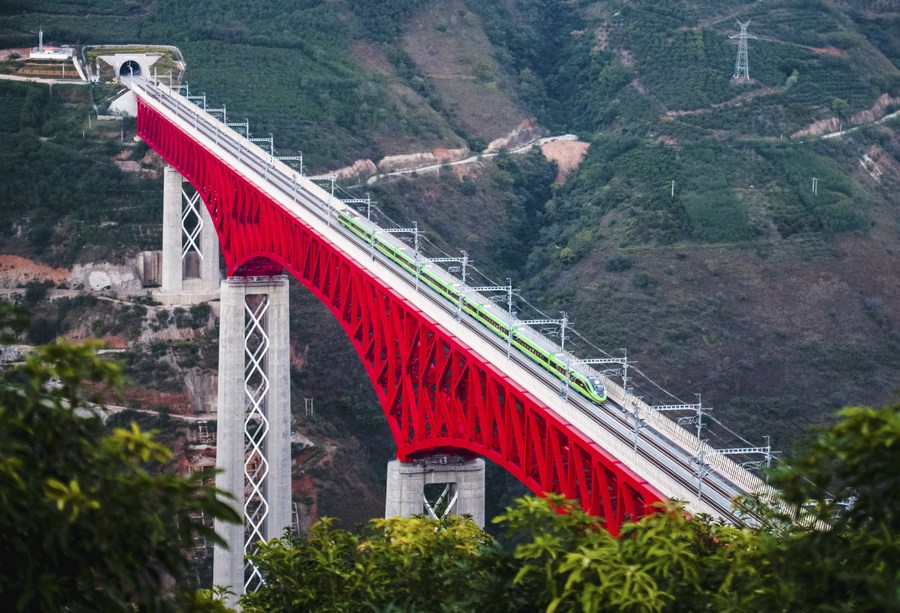Initiative helps put global development on track: China Daily editorial


For those in developed countries, from whom it may seem remote, the appeal of China's Belt and Road Initiative can be difficult to fathom. But for people in countries along the routes of the inland economic belt and the maritime Silk Road, they have been game changers.
This will become clear to the people of Laos when the 1,035-kilometer railway line connecting China and Laos is operational. The first freight train from Kunming, capital of China's southwestern Yunnan province , arrived in the Lao capital, Vientiane, on Saturday. The line was officially opened on Friday after five years of construction. Previously, there was only one railway line in Laos, a 3.5-kilometer stretch connecting the country with Thailand.
The new railway line has shortened the journey from the border area between China and Laos from two days to three hours. The cost of logistics from Vientiane to Kunming will be cut by 40 to 50 percent.
Improved transportation infrastructure is a prerequisite for the economic development of an underdeveloped region, which has been verified in the role it has played in facilitating and stimulating China's economic growth over the past few decades. The trade facilitated by the new link with China will promote the economic development of Laos and it will undoubtedly provide a lot of opportunities for people along the route.
This is just one example of how the Belt and Road Initiative benefits the economic development of countries and promotes people's livelihoods and well-being.
In the past eight years since the initiative was first proposed in 2013, China has signed more than 200 cooperation documents with 140 countries and 32 international organizations under the framework of the initiative. More than 90 mechanisms for cooperation have been established.
China's accumulative commodity trade with countries along the Belt and Road routes reached $1.4 trillion by September. Despite the COVID-19 pandemic, the imports and exports with these countries increased 23 percent in the first 10 months of this year compared with the same period last year. The number of freight trains and freight volume to Central European countries from January to October surpassed those of 2020.
The circle and scale of cooperation involved in the initiative are expanding rapidly. Not least because the initiative has proved to be a public product that provides tangible benefits to the countries involved. At the same time, China's cooperation with those countries in a wide range of areas has been greatly expanded, which has benefited the development of both sides.
With the principles of equality and mutual benefit strictly adhered to, the initiative is more than just a trade facilitator, as China is tapping the cooperation potential with participating countries in the fields of science and technology, the digital economy and ecological conservation.
The initiative is proving its worth by being a driver for the development of the global economy.
Today's Top News
- Xi calls for promoting volunteer spirit to serve national rejuvenation
- Xi chairs CPC meeting to review report on central discipline inspection
- Reunification will only make Taiwan better
- Outline of Xi's thought on strengthening military published
- Targeted action plan to unleash consumption momentum
- Separatist plans of Lai slammed






























